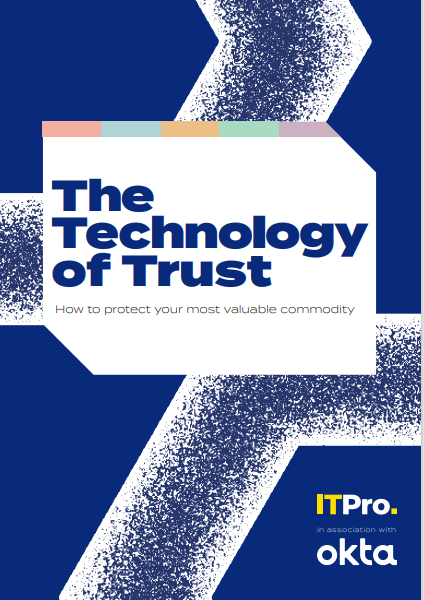Weekly threat roundup: Apple's M1 chip, VMware, Trend Micro
Pulling together the most dangerous and pressing flaws that businesses need to patch


Patch management is far easier said than done, and security teams may often be forced into prioritising fixes for several business-critical systems, all released at once. It's become typical, for example, to expect dozens of patches to be released on Microsoft's Patch Tuesday, with other vendors also routinely getting in on the act.
Below, IT Pro has collated the most pressing disclosures from the last seven days, including details such as a summary of the exploit mechanism, and whether the vulnerability is being exploited in the wild. This is in order to give teams a sense of which bugs and flaws might pose the most dangerous immediate security risks.
Apple's M1 chip affected by hardware-level flaw
The flagship M1 CPU developed by Apple is embedded with a vulnerability that can allow any two apps under an operating system (OS) to exchange data between them covertly.
Tracked as CVE-2021-30747, the flaw is baked into the hardware, meaning it cannot be fixed without changing the chip technology. It allows communication between processes running as different users and under different privilege levels.
The vulnerability isn't easily exploited, and malware cannot use this to infect machines or take over systems. It does, however, give strains of malware already installed on computers additional capabilities, such as communication with other strains.
Practically, however, it's unlikely cyber criminals can develop mechanisms to exploit the bug, according to Hector Martin, the researcher who discovered it, with advertising companies more likely to be inclined to abuse it for cross-app tracking purposes.
VMware advises immediate patching of vCenter systems
Ransomware gangs are primed to exploit two vulnerabilities in VMware's vCenter Server platform, according to the company, with hackers able to abuse the flaws to launch remote code execution attacks.
Get the ITPro daily newsletter
Sign up today and you will receive a free copy of our Future Focus 2025 report - the leading guidance on AI, cybersecurity and other IT challenges as per 700+ senior executives
The most severe bug of the pair, tracked as CVE-2021-21985, which lies in the vSphere Client, involves a lack of input validation in the Virtual SAN Health Check plugin, which is enabled in the system by default. This plugin allows customers to manage their virtual deployments and includes dozens of automated health checks.
RELATED RESOURCE

It's rated 9.8 on the CVSS threat severity scale, out of ten, meaning its effects are particularly devastating and it's relatively straightforward to exploit. Hackers with network access to port 443 will be able to execute commands with unrestricted privileges on the OS that hosts vCenter Server.
The second flaw, tracked as CVE-2021-21986, is less severe but also allows hackers with network access to port 443 on vCenter Server to perform actions allowed by various plugins without authentication. These comprise the Virtual SAN Health Check, Site Recovery, vSphere Lifecycle Manager and VMware Cloud Director Availability plugins.
Bluetooth bug allows hackers to mimic devices
Cyber criminals can exploit flaws in Bluetooth Core and Mesh Profile Specifications to disguise themselves as legitimate devices and execute man in the middle attacks.
The fresh wave of flaws, discovered by researchers at the French security agency known as Agence nationale de la sécurité des systèmes d'information (ANSSI), allow impersonation attacks and AuthValue disclosures.
The discovery of six flaws, CVE-2020-26555 through CVE-2020-26560, builds on previously discovered vulnerabilities which could have been exploited in so-called 'Bluetooth Impersonation Attacks' (BIAS).
They allow hackers to impersonate a device and establish a secure connection with a victim without possessing the long-term key shared by the impersonated device and the victim. It effectively bypasses the authentication mechanism.
Apple fixes three macOS flaws under attack
Apple has issued a patch to fix several vulnerabilities across its various operating systems, including a macOS Big Sur zero-day flaw that's under attack.
Tracked as CVE-2021-30713, the flaw lies in Apple's Transparency, Consent and Control (TCC) framework, which manages user consent for permissions across local apps. Hackers can exploit the flaw to gain permissions for malicious apps, granting access to the hard drive and to screen recording, which could allow them to take screenshots of infected machines.
While Apple declined to share the exploit mechanism, security firm Jamf has identified the malware known as XCSSET is currently abusing the flaw.
Alongside this flaw, Apple has patched CVE-2021-30663 and CVE-2021-30665, both lying in the WebKit browser engine in Safari and Apple TV, and both under attack. They can each be exploited to launch remote code execution attacks.
Trend Micro home network security allows PC takeover
Researchers have discovered flaws in Trend Micro's Home Network Security Station that could let attackers launch denial of service (DoS) attacks, escalate user privileges and levy remote code execution attacks.
This is a device that plugs into home routers in order to prevent internet of things (IoT) devices from being hacked. The first two flaws lead to privilege escalation, while the third is a hard-coded password flaw.
Three security vulnerabilities in the platform, tracked CVE-2021-032457 through CVE-2021-32459, can be exploited to infiltrate home networks. Specifically, hackers can exploit the first two bugs to elevate permissions on the targeted device. The third flaw exists with a set of hard-coded credentials on the device, which an attacker could exploit to create files, change permissions and upload arbitrary data to an SFTP server.

Keumars Afifi-Sabet is a writer and editor that specialises in public sector, cyber security, and cloud computing. He first joined ITPro as a staff writer in April 2018 and eventually became its Features Editor. Although a regular contributor to other tech sites in the past, these days you will find Keumars on LiveScience, where he runs its Technology section.
-
 Should AI PCs be part of your next hardware refresh?
Should AI PCs be part of your next hardware refresh?AI PCs are fast becoming a business staple and a surefire way to future-proof your business
By Bobby Hellard Published
-
 Westcon-Comstor and Vectra AI launch brace of new channel initiatives
Westcon-Comstor and Vectra AI launch brace of new channel initiativesNews Westcon-Comstor and Vectra AI have announced the launch of two new channel growth initiatives focused on the managed security service provider (MSSP) space and AWS Marketplace.
By Daniel Todd Published
-
 Hackers are targeting Ivanti VPN users again – here’s what you need to know
Hackers are targeting Ivanti VPN users again – here’s what you need to knowNews Ivanti has re-patched a security flaw in its Connect Secure VPN appliances that's been exploited by a China-linked espionage group since at least the middle of March.
By Emma Woollacott Published
-
 Broadcom issues urgent alert over three VMware zero-days
Broadcom issues urgent alert over three VMware zero-daysNews The firm says it has information to suggest all three are being exploited in the wild
By Solomon Klappholz Published
-
 Nakivo backup flaw still present on some systems months after firms’ ‘silent patch’, researchers claim
Nakivo backup flaw still present on some systems months after firms’ ‘silent patch’, researchers claimNews Over 200 vulnerable Nakivo backup instances have been identified months after the firm silently patched a security flaw.
By Solomon Klappholz Published
-
 Everything you need to know about the Microsoft Power Pages vulnerability
Everything you need to know about the Microsoft Power Pages vulnerabilityNews A severe Microsoft Power Pages vulnerability has been fixed after cyber criminals were found to have been exploiting unpatched systems in the wild.
By Solomon Klappholz Published
-
 Vulnerability management complexity is leaving enterprises at serious risk
Vulnerability management complexity is leaving enterprises at serious riskNews Fragmented data and siloed processes mean remediation is taking too long
By Emma Woollacott Published
-
 A critical Ivanti flaw is being exploited in the wild – here’s what you need to know
A critical Ivanti flaw is being exploited in the wild – here’s what you need to knowNews Cyber criminals are actively exploiting a critical RCE flaw affecting Ivanti Connect Secure appliances
By Solomon Klappholz Published
-
 Researchers claim an AMD security flaw could let hackers access encrypted data
Researchers claim an AMD security flaw could let hackers access encrypted dataNews Using only a $10 test rig, researchers were able to pull off the badRAM attack
By Solomon Klappholz Published
-
 A journey to cyber resilience
A journey to cyber resiliencewhitepaper DORA: Ushering in a new era of cyber security
By ITPro Published